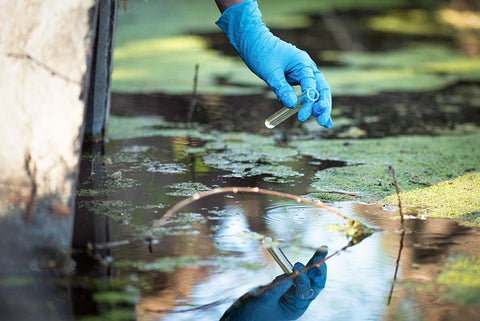How Sediments are Formed and the Different Kinds of Sediments Found in Water

May it be caused by natural floras of water found in seas, oceans, lakes, waterfalls, and many more, or can be caused by human activities that disrupt the natural state of water and creates turbidity, thus forming sediments in the water.
Sediment is a matter or substance that settles at the bottom of any liquid.
Caused mainly by human activities, like mining and agriculture, and artificial chemical and waste materials, various particles get mixed up with water. Without interruption with the water's natural state, these particles sometimes settle at the bottom.
Sediments, when deranged, are one of the causes of turbidity in water.
Some of the particles are naturally found in any form of bodies of water and are one of the sources of turbidity and sediments in the water.
A few of the natural sediments are phytoplankton, dinoflagellates, cyanobacteria, and many more, not to mention coliform bacteria that can be naturally found in soil and one of the common causes of gastrointestinal disturbances, and lastly, sand that is produced by dead coral reefs that were crushed to tiny pieces over a long period.
Aside from these natural floras, specific artificial chemicals and waste materials can also be the cause of these sediments that, most of the time, are toxic to health.
Not only that, by the time it reaches the public water treatment and goes through the process of chlorination, sediments are also present.
When combined with water, Chlorine is dissolved, some chlorine settles at the bottom of the water, forming sediments.
Also, sediments can be caused by iron from rusted water pipes, soil, microorganism, and other substances seeping through the improperly operated and unmaintained water system.
Because some of the water lines going directly to our home are sometimes rusted, broken, or cracked, lead, copper, and soil can seep through the water lines and combines with water that we use at home.
How sediments are removed, and how safe should drinking water be?

Sediments are only formed without any water disruption. Although these particles are naturally found in water, sediments can also be toxic, mainly when chemicals are used and had accumulated to a large amount and combines with water.
Chemicals such as aluminum sulfate, liquid chlorine, calcium hydroxide, and poly-aluminum chloride are used as flocculating agents.
These flocculating agents help by water filtration and purification by clumping the substances together found in water, and they are also used in mining, agriculture, paper manufacturing, and textile industries.
The resulting flocks or clumps produced after the chemical reaction can now be easily removed or filtered out of drinking water. There also are chemical reagents that have a different reaction when combined with water.
The reaction usually gives heat when moisture is present, thus killing the microorganisms that still found water after the filtration and chlorination process. Such chemicals are ferric chloride, fluorosilicic acid, sodium fluorosilicate, and sodium chloride, used in pharmaceuticals, mostly in paper and textile manufacturing industries.
According to The Environmental Protection Agency in the United States of America, the ideal contaminant level in drinking water should be 1 NTU (Nephelometric Turbidity Unit). The unit of measurement used is for turbidity, which is usually the cause of sediments present in drinking water.
A turbidity level higher than 5 NTU often has disease-causing microorganisms such as viruses, parasites, and bacteria that can cause gastrointestinal disturbances and psychological effects.
This agency enforced the standards for the public's safety and that the permissible contaminant level in water is achieved. This non-government agency also regulates those operating particular water treatment systems to follow these specific standards in purifying and filtering water before dispensing.
Though these are enforceable standards, it doesn’t mean that slightly elevated levels will pose a significant threat to the public. This ensures that the contaminant in drinking water is controlled and would be potable and safe for the public to be consumed.
What are the effects of the toxic sediments found in drinking water on our health?
No matter how you view it, the issue is that chemicals will always be dangerous and toxic. And if it is added to our drinking water, though the primary purpose is to filter and purify water, it can be detrimental to health.
Since different chemicals are used to filter and purify water when consumed, especially in a large amount, they have adverse effects on our body that cause gastrointestinal disturbances like cramps, gas nausea, and vomiting, and sometimes causes diarrhea that leads to dehydration.
← Older Post Newer Post →
